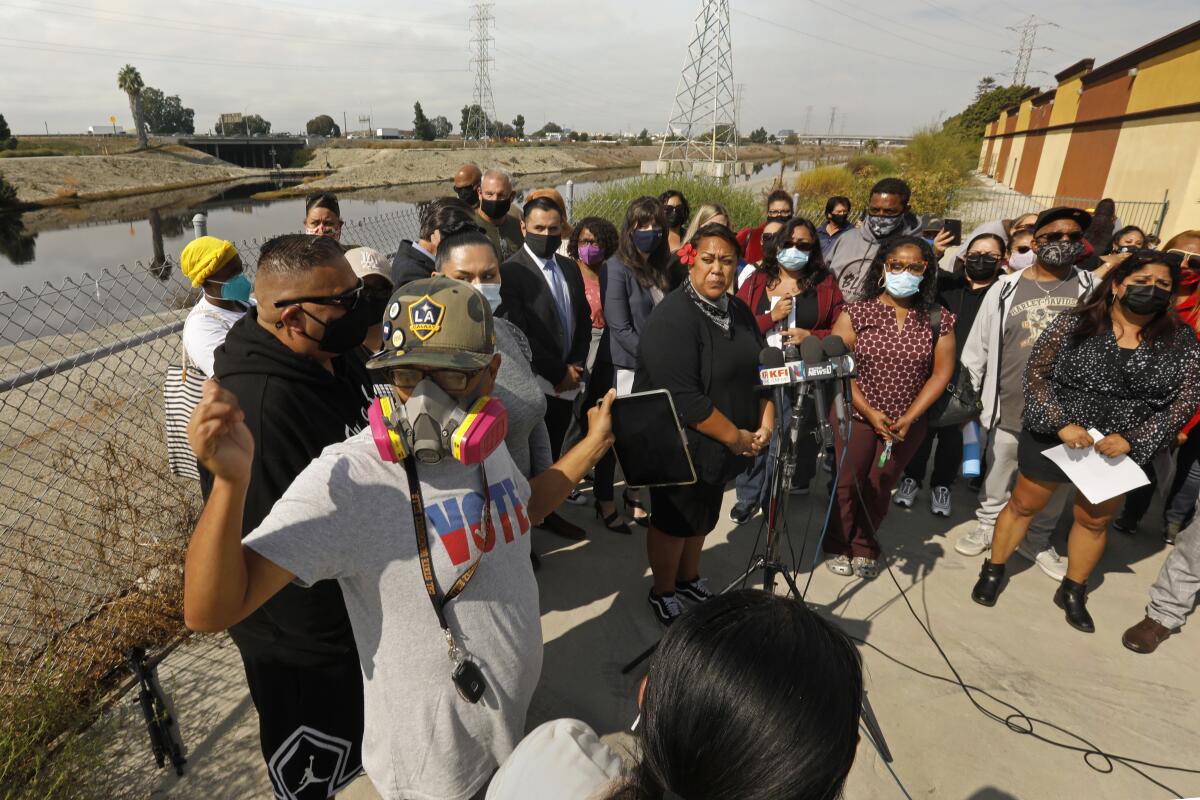Editorial: Why does Carson still stink? The government response has fallen short

- Share via
It’s been well over a month since residents of Carson and surrounding communities began complaining of an overpowering, sulfur-like odor likened to rotten eggs, melting plastic, sewage or dead bodies.
The stench, produced by hydrogen sulfide gas that air quality officials have detected at extremely high levels, has sickened people with nausea, coughing, headaches and watery eyes, and forced many residents from their homes.
Authorities have a leading theory: that the pungent gas is emanating from a buildup of decaying vegetation and marine life in the Dominguez Channel made worse by drought. But there are still no definitive answers on what’s causing the smell, why it has persisted or how best to get rid of it.
What is clear is that the response of local government has been unacceptably slow, uncoordinated and inattentive to people’s health and well-being.
Residents should be able to live and breathe in their own homes without gagging on the stench of death and decay, and are right to be outraged. They deserve preparedness, care and urgency from city and county leaders, not an attitude that suggests this is only a bad smell, just wait and it will go away.
Although county health officials say they are not concerned about long-term health effects and there is no imminent danger, it’s not like residents are being exposed to inconsequential amounts of a harmless chemical.
Hydrogen sulfide is a toxic compound with immediate and chronic health effects, and air quality officials have measured it at levels as high as 7,000 parts per billion, about 230 times the state nuisance standard. To put that in perspective, the nose can detect this chemical at less than 1 part per billion.
Odors seem to be improving, but readings of hydrogen sulfide along the channel still routinely exceed state standards.
Air quality officials, who have received more than 4,200 odor complaints across more than half a dozen communities, are evaluating whether oil refineries, water treatment plants or other industrial facilities in the area could also be contributing. But they have not yet determined what sources are to blame and have taken no enforcement action.
Community members are justified in raising concerns about environmental racism, saying this is just another example of the second-class treatment communities of color get through higher exposure to pollution.
Carson, which is predominantly Latino, Asian and Black, and other nearby communities in the shadow of sprawling refineries and heavy industry already contend with a disproportionate concentration of environmental hazards, including earth-rumbling explosions and fires, foul-smelling chemical leaks and ongoing toxic air pollution.
Putrid odors from the Dominguez Channel have periodically wafted through Carson before, only to disappear a day or two later. That may have led officials to assume that this too would just clear up on its own.
That’s perhaps one reason why the Los Angeles County Department of Public Works, which is responsible for maintaining the Dominguez Channel, took nearly two weeks after the odor was first reported to begin acting to stop it, by spraying an odor neutralizer.
County officials let down residents by walking back overly optimistic timelines on when the smell would dissipate. And they took too long to set up a payment program for thousands of affected households to buy air filters, purifiers or relocate to hotels.
County supervisors on Tuesday finally declared a local emergency and asked Gov. Gavin Newsom for disaster assistance — not because pollution levels were getting worse, but because they have gone on so long. Some community groups want the U.S. Environmental Protection Agency to take over.
It’s not clear that taking the response away from local agencies would solve this any faster. But all levels of government need to start acting with more urgency to deliver residents as much immediate relief as possible and get to the bottom of this rotten situation.
More to Read
A cure for the common opinion
Get thought-provoking perspectives with our weekly newsletter.
You may occasionally receive promotional content from the Los Angeles Times.










